HTTP - Hypertext Transfer Protocol
HTTP - Hypertext Transfer Protocol
- originally designed to transfer
hypertext- Hypertext “structured text that uses logical links, a.k.a. hyperlinks, between nodes containing text”
- Designed in the early 1990s, HTTP is an extensible protocol which has evolved over time.
- It is an application layer protocol that is sent over TCP, or over a TLS-encrypted TCP connection, though any reliable transport protocol could theoretically be used.
- Due to its extensibility, it is used to fetch hypertext documents, images, videos or post content to servers, like with HTML form results. HTTP can also be used to fetch parts of documents to update Web pages on demand.
- was designed as a request-response Application layer protocol where a client could
request hypertext from a server.- This hypertext could be modified and set up in such a way as to provide all sorts of goodies to the requesting
user agent (UA)— for example, a web browser - example
- a client
requests a particular resourceusing its Uniform Resource Identifier (URI) — most commonly expressed for web requests in the form of a URL (Uniform Resource Locator) - a server
responds to the HTTP requestby providing the resource requested
- This hypertext could be modified and set up in such a way as to provide all sorts of goodies to the requesting
- HTTP can be used for virtually anything anymore, good or bad intent
- It also provides for (mostly) secure communication in its HTTPS version: HTTP over TLS, or SSL.
- Although I could go on and on about other features of HTTP, including some well-know recent attacks against the secure version (HEARTBLEED and POODLE)
- the particular markup of hypertext most see: HTML.
NOTE:
HTMLwas designed specifically to display dataXMLwas created to transport and store data.XML tagsare, basically, whatever you want them to be.
Clients and servers communicate by exchanging individual messages (as opposed to a stream of data).
- Requests: The messages sent by the client, usually a Web browser
- Responses: the messages sent by the server as an answer
Components of HTTP-based systems
HTTP is a client-server protocol: requests are sent by one entity, the user-agent (or a proxy on behalf of it).
- Most of the time the user-agent is a Web browser, but it can be anything, for example a robot that crawls the Web to populate and maintain a search engine index.
In reality, there are more computers between a browser and the server handling the request.
Each individual request is sent to a server, which handles it and provides an answer, called
the response.Between the client and the server there are numerous entities, proxies, which perform different operations and act as
gateways or caches.
the layered design of the Web, these are hidden in the network and transport layers.
- HTTP is on top, at the application layer, the underlying layers are mostly irrelevant to the description of HTTP.
HTTP is an extensible protocol that is easy to use. The client-server structure, combined with the ability to simply add headers, allows HTTP to advance along with the extended capabilities of the Web.
HTTP/2: adds some complexity, embedding HTTP messages in frames to improve performance , the basic structure of messages has stayed the same since HTTP/1.0.
Session flow remains simple, allowing it to be investigated, and debugged with a simple HTTP message monitor.
Client, user-agent
Client: the user-agent
The user-agent is any tool that acts on the behalf of the user.
This role is primarily performed by the Web browser; or programs used by engineers and Web developers to debug their applications.
.
It is never the server (though some mechanisms have been added over the years to simulate server-initiated messages).
To present a Web page, the browser sends an original request to fetch the HTML document that represents the page.
It then parses this file, making additional requests corresponding to execution scripts, layout information (CSS) to display, and sub-resources contained within the page (usually images and videos).
The Web browser then mixes these resources to present to the user a complete document, the Web page.
Scripts executed by the browser can fetch more resources in later phases and the browser updates the Web page accordingly.
A Web page is a hypertext document .
This means some parts of displayed text are links which can be activated (click) to fetch a new Web page, allowing the user to direct their user-agent and navigate through the Web.
The browser translates these directions in HTTP requests, and further interprets the HTTP responses to present the user with a clear response.
Web server
On the opposite side of the communication channel, is the server , which serves the document as requested by the client .
A server appears as only a single machine virtually:
it may actually be a collection of servers, sharing the load (load balancing) or a complex piece of software interrogating other computers (like cache, a DB server, or e-commerce servers), totally or partially generating the document on demand.
A server is not necessarily a single machine, but several server software instances can be hosted on the same machine. With HTTP/1.1 and the Host header, they may even share the same IP address.
Proxies
Between the Web browser and the server, numerous computers and machines relay the HTTP messages.
Due to the layered structure of the Web stack, most operate at the
transport, network or physical levelsbecoming transparent at the HTTP layer and potentially making a significant impact on performance.Those operating at the application layers are generally called proxies .
These can be transparent,forwarding on the requests they receive without altering them in any way, or non-transparent, change the request in some way before passing it along to the server .
Proxies may perform numerous functions:
- caching
(the cache can be public or private, like the browser cache)
- filtering
(like an antivirus scan or parental controls)
- load balancing
(to allow multiple servers to serve the different requests)
- authentication
(to control access to different resources)
- logging
(allowing the storage of historical information)
- caching
Basic aspects of HTTP
HTTP is simple
- HTTP is generally designed to be simple and human readable, even with the added complexity introduced in HTTP/2 by encapsulating HTTP messages into frames. HTTP messages can be read and understood by humans, providing easier testing for developers, and reduced complexity for newcomers.
HTTP is extensible
- Introduced in HTTP/1.0, HTTP headers make this protocol easy to extend and experiment with .
- New functionality can even be introduced by a simple agreement between a client and a server about a new header’s semantics.
HTTP is stateless, but not sessionless
HTTP is stateless :
- there is no link between two requests being successively carried out on the same connection. This immediately has the prospect of being problematic for users attempting to interact with certain pages coherently, for example, using e-commerce shopping baskets.
HTTP itself is stateless, HTTP cookies allow stateful sessions .
- Using header extensibility, HTTP Cookies are added to the workflow, allowing session creation on each HTTP request to share the same context, or the same state.
HTTP and connections
A connection is controlled at the transport layer, fundamentally out of scope for HTTP.
Though HTTP doesn’t require the underlying transport protocol to be connection-based; only requiring it to be reliable, or not lose messages (so at minimum presenting an error).
transport protocols: TCP is reliable and UDP isn’t.
HTTP therefore relies on the TCP standard, which is connection-based.
Before a client and server can exchange an HTTP request/response pair, they must establish a TCP connection , a process which requires several round-trips.
The default behavior of HTTP/1.0 is to open a separate TCP connection for each HTTP request/response pair . less efficient than sharing a single TCP connection when multiple requests are sent in close succession.
- to mitigate this flaw, HTTP/1.1 introduced pipelining (proved difficult to implement) and persistent connections:
- the underlying TCP connection can be partially controlled using the
Connectionheader.
- the underlying TCP connection can be partially controlled using the
- HTTP/2 multiplexing messages over a single connection
, helping keep the connection warm and more efficient.
Experiments are in progress to design a better transport protocol more suited to HTTP.
- For example, Google is experimenting with QUIC which builds on UDP to provide a more reliable and efficient transport protocol.
What can be controlled by HTTP
This extensible nature of HTTP has, over time, allowed for more control and functionality of the Web. Cache or authentication methods were functions handled early in HTTP history. The ability to relax the origin constraint, by contrast, has only been added in the 2010s.
Here is a list of common features controllable with HTTP.
- Caching
- How documents are cached can be controlled by HTTP .
- The server can instruct 命令 proxies and clients, about what to cache and for how long
.
- The client can instruct intermediate cache proxies to ignore the stored document.
- Relaxing the origin constraint
- To prevent snooping and privacy invasions , Web browsers enforce strict separation between Web sites.
- Only pages from the same origin can access all the information of a Web page. Though such constraint is a burden to the server, HTTP headers can relax this strict separation on the server side, allowing a document to become a patchwork of information sourced from different domains; there could even be security-related reasons to do so.
- Authentication
- Some pages may be protected so that only specific users can access them.
- Basic authentication may be provided by HTTP, either using the
WWW-Authenticate and similar headers, or by setting aspecific session using HTTP cookies.
- Proxy and tunneling
- Servers or clients are often located on intranets and hide their true IP address from other computers. HTTP requests then go through proxies to cross this network barrier.
- Not all proxies are HTTP proxies. The SOCKS protocol, for example, operates at a lower level. Other protocols, like ftp, can be handled by these proxies.
- Sessions
- Using HTTP cookies allows you to link requests with the state of the server .
- This creates sessions, despite basic HTTP being a stateless protocol. This is useful not only for e-commerce shopping baskets, but also for any site allowing user configuration of the output.
HTTP flow
When a client wants to communicate with a server (final server or an intermediate proxy), it performs the following steps:
- Open a TCP connection
:
- The TCP connection is used to send a request, or several, and receive an answer.
- The client may
- open a new connection,
- reuse an existing connection,
- open several TCP connections to the servers.
- Send an HTTP message
:
- Read the response
sent by the server
- Close or reuse the connection
for further requests.
If HTTP pipelining is activated, several requests can be sent without waiting for the first response to be fully received.
HTTP pipelining has proven difficult to implement in existing networks, where old pieces of software coexist with modern versions.
HTTP pipelining has been superseded in HTTP/2 with more robust multiplexing requests within a frame.
HTTP Messages
in HTTP/1.1 and earlier , HTTP messages are human-readable.
In HTTP/2 , these messages are embedded into a frame (binary structure) , allowing optimizations like compression of headers and multiplexing. Even if only part of the original HTTP message is sent in this version of HTTP, the semantics of each message is unchanged and the client reconstitutes (virtually) the original HTTP/1.1 request. It is therefore useful to comprehend HTTP/2 messages in the HTTP/1.1 format.
There are two types of HTTP messages, requests and responses, each with its own format.
HTTP Requests
Requests consists of the following elements:
- An HTTP method , usually a verb like GET, POST or a noun like OPTIONS or HEAD
- defines the operation the client wants to perform.
- Typically, a client wants to fetch a resource (GET) or post the value of an HTML form (POST).
- The path of the resource to fetch ; the URL of the resource stripped from elements that are obvious from the context
- the protocol (http://), the domain (developer.mozilla.org), the TCP port (80).
The version of the HTTP protocol .
- Optional headers
: convey additional information for the servers.
- Or a body , for some methods like
POST, similar to those in responses, which contain the resource sent.
HTTP Responses
Responses consist of the following elements:
The version of the HTTP protocol they follow.
A status code , indicating if the request was successful, or not, and why.
A status message , a non-authoritative short description of the status code.
- HTTP headers
, like those for requests.
- Optionally, a body containing the fetched resource.
APIs based on HTTP
The most commonly used API based on HTTP is the XMLHttpRequest API
- can be used to exchange data between a user agent and a server.
The modern Fetch API provides the same features with a more powerful and flexible feature set.
Another API, server-sent events, is a one-way service that allows a server to send events to the client, using HTTP as a transport mechanism.
Using the EventSource interface, the client opens a connection and establishes event handlers. The client browser automatically converts the messages that arrive on the HTTP stream into appropriate Event objects, delivering them to the event handlers that have been registered for the events’ type if known, or to the onmessage event handler if no type-specific event handler was established.
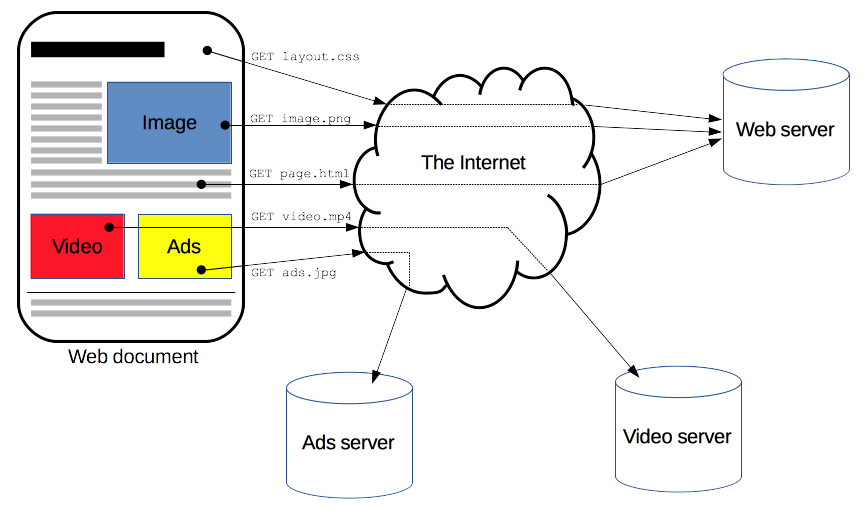
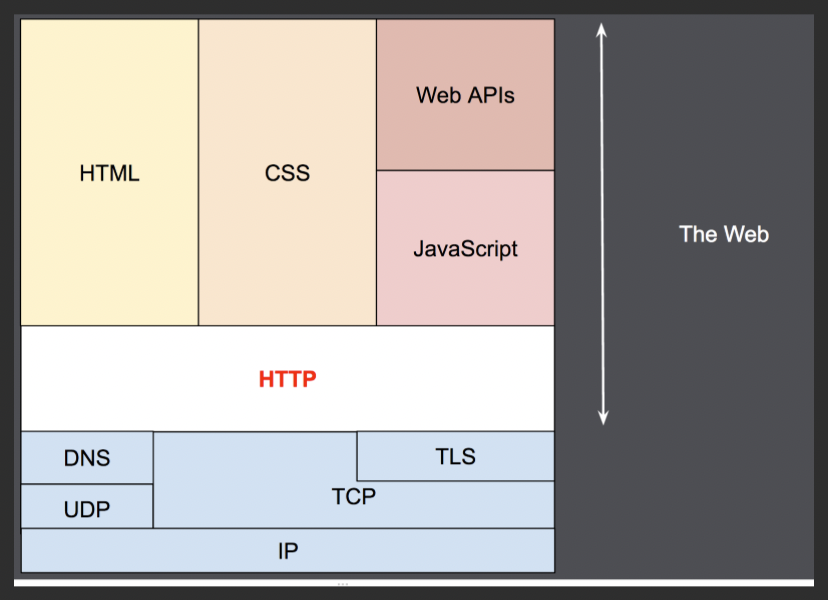


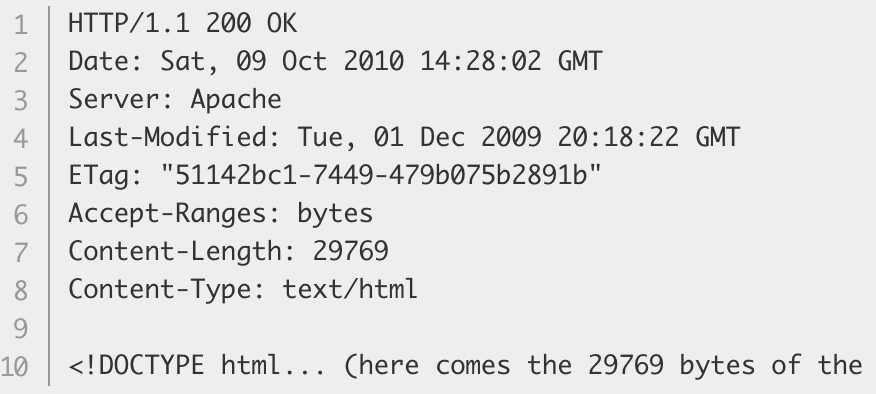
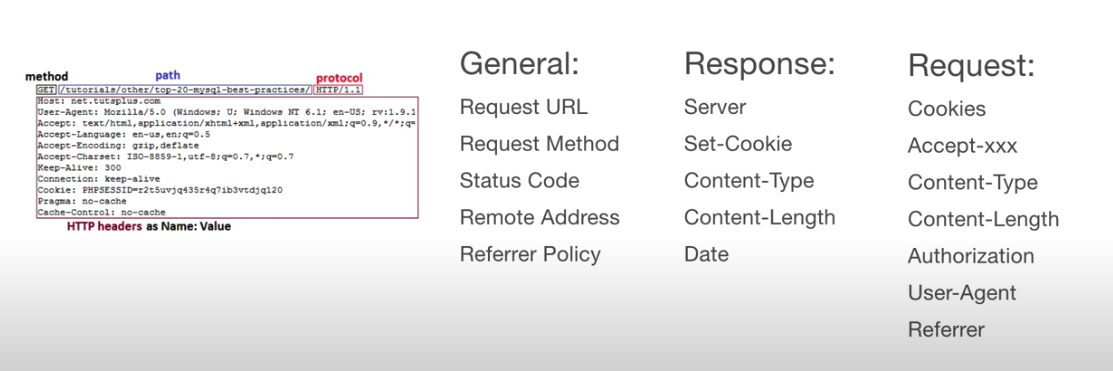
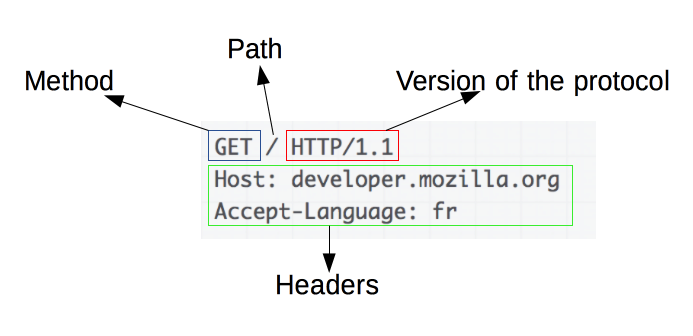
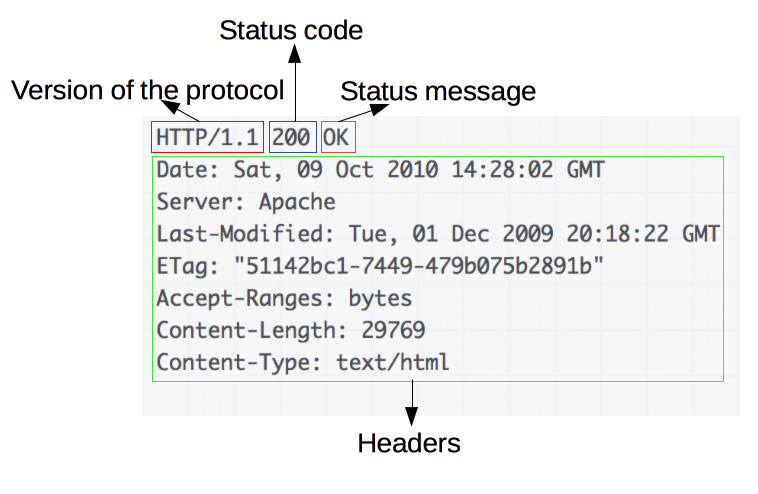
Comments powered by Disqus.